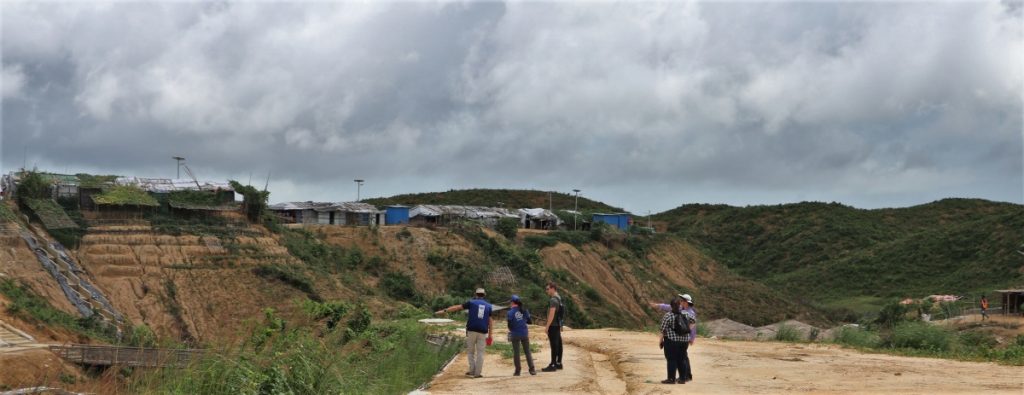IRI and NASA partner with U.N. Agencies for disaster risk reduction in Rohingya Camps
This story has been adapted from a UNDP Bangladesh release written by Eno Jonathan Ovuorho.

Since August 2017, Bangladesh’s south-east area has seen a huge influx of Rohingya refugees from Myanmar.
During the summer and rainy season, vulnerability of refugees and host communities to wind, landslide and flooding increases greatly, and despite best efforts from public and private sector partners, there still remains room for improvement in reducing the risks of disasters.
To take early action and respond effectively to these events, it is crucial that decision makers have access to appropriate weather and hazard information to help them prioritize needs and effectively use limited financial resources.
In light of this, the United Nations Development Programme (UNDP), the International Organization for Migration (IOM), and the United Nations High Commission for Refugees (UNHCR) together with NASA and Columbia University’s International Research Institute for Climate and Society (IRI) are working to support weather and climate-sensitive decision making for disaster preparedness.
Under the “Connecting Earth Observations to Decision Makers for Preparedness Actions (COMPAS)” project, there will be provision of climate and weather advice, development of hazard modeling products, and learning opportunities on risk-informed decision making.
UNDP recently hosted a team from NASA and IRI in Cox’s Bazar, where the scientists met with the teams from UNDP, IOM and UNHCR on the ground.
The visit included a learning workshop with staff from the UN, international and national nongovernmental organizations, as well as the Bangladesh government. The workshop involved walking through different decisions that are made before an action is taken during heavy rainfall events in the refugee camps.
“The workshop was to help familiarize participants with contextualizing risks through earth observations and other types of data like maps in their decision-making process,” said Shanna McClain, from NASA’s Earth Science Division. She noted that it was a reciprocal interaction, where the workshop participants learned about approaches used be NASA and IRI, and the visiting scientists learned about the highly localized decisions that must be made by humanitarian professionals working in the camp.
“The COMPAS project offers an opportunity for climate scientists to learn more about decision making in humanitarian emergencies and specialized contexts, such as the Rohingya refugee camps, which are challenging due to complex climate and socioeconomic factors,” said IRI’s Andrew Kruczkiewicz, who is one of the principal investigators of the project.
The team also visited sites within the Rohingya camps to assess landslide susceptibility and meet with government representatives and Rohingya refugees. The Camp-In-Charge of Camp 10, Hafizol Islam, welcomed the discussion around landslides, about which he has less knowledge than cyclones. “We have little information on landslides. It is unpredictable for us and can happen at any time,” he said.
For McClain, the visit was a chance to get more support from multiple decision-making levels regarding disaster risk reduction.
“Working with UNDP, IOM, UNHCR and partners in Bangladesh has helped us understand what is critical to them and also helps us develop our products in a way that answers the kind of questions they have,” she said.
Kruczkiewicz said he was grateful to the humanitarian professionals who participated in the workshop.
“It was a privilege to work alongside some of the key stakeholders involved in the Rohingya response on the ground.” He said their input was critical for IRI and NASA to develop a collaborative process for climate service development, including tailored climate risk products for specific disaster risk reduction activities.
“We realize that this meant taking some time away from their humanitarian activities” he said. “The fact that they did so shows us that they also see value in the work we are doing there.”

You must be logged in to post a comment.